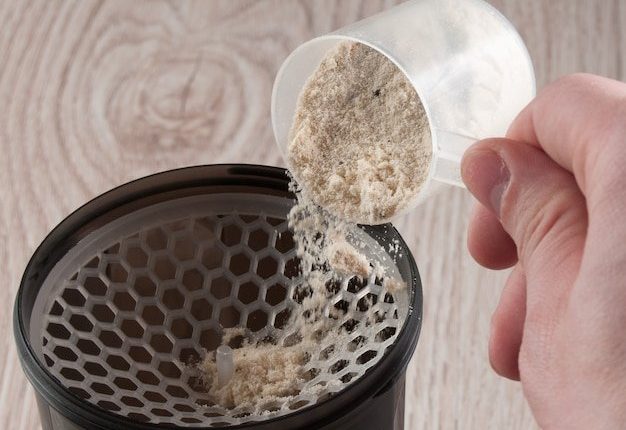Wine producers have long sought effective methods for preventing the protein haze that can impair the clarity and quality of their products. Recent research has focused on innovative approaches, such as utilizing high chitin yeast strains for wine haze prevention. In a groundbreaking study titled “Isolation and characterisation of Saccharomyces cerevisiae mutants with increased cell wall chitin using fluorescence-activated cell sorting,” authors Lesiba Tyrone Chuene, Thulile Ndlovu, Debra Rossouw, Rene Kathleen Naidoo-Blassoples, and Florian Franz Bauer embark on a scientific journey to address this issue. This study presents a novel method to enhance the chitin content in yeast cell walls, potentially offering a natural solution to mitigate haze formation in wines.
At the core of this research is the hypothesis that increased chitin in yeast cell walls can effectively bind and neutralize grape pathogenesis-related chitinases, which are known to cause wine haze. Leveraging state-of-the-art technology, the team employed fluorescence-activated cell sorting (FACS) combined with a high-throughput screening strategy to isolate mutants of Saccharomyces cerevisiae with elevated chitin levels. This technique was initially tested on a pooled deletion strain library of the yeast to validate the efficacy of the method.
Significantly, the research not only reaffirmed the role of known genes in chitin amplification but also uncovered previously unidentified genes linked to chitin biosynthesis and deposition. These findings suggest that these genes contribute to cell wall strength and membrane trafficking, enhancing the yeast’s potential utility in haze prevention. Further application of this screening method to a mutagenized population of a commercial wine yeast strain, specifically Saccharomyces cerevisiae EC1118, yielded mutants with markedly higher chitin content than the wild type. Preliminary tests in a synthetic model wine showed these mutants significantly deterred chitinase activity, paving the way for potential real-world application.
This study marks a significant step forward in the quest for sustainable and effective strategies for wine clarity and stability, using genetically enriched yeast strains as a natural remedy for wine haze issues. The implications of this research could be profoundly transformative for the wine industry, offering a biotechnological solution to a pervasive challenge.
The quest for clarity and stability in wine production is as old as the practice of winemaking itself. Among the various challenges that vintners face, the issue of wine haze formation stands out due to its impact on the aesthetic and sensory qualities of wine. Wine haze is primarily caused by colloidal particles that remain suspended in the wine, leading to a cloudy appearance that can be undesirable for consumers. Traditional methods of dealing with this issue involve fining agents and filtration, but these can adversely affect the wine’s flavor profile and reduce its overall quality. This has led to an increasing interest in finding more natural and less invasive solutions, among which the use of high chitin yeast strains for wine haze prevention has recently gained attention.
Chitin, a natural polysaccharide found in the cell walls of fungi, including yeasts, has properties that make it highly effective in binding with haze-causing proteins and polyphenols in wine. Yeasts that have high chitin content in their cell walls can potentially act as natural clarifying agents by interacting with these haze-forming compounds and facilitating their removal during the sedimentation process. The application of high chitin yeast strains could therefore offer a dual benefit—enhancing clarity while potentially influencing the sensory characteristics of wine positively.
Exploration into the genetic modification of yeast strains has opened possibilities for enhancing chitin content in yeast cell walls. Such modifications do not only aim at increasing the efficacy of yeasts in preventing haze formation but also in improving overall yeast health and viability, which is crucial for successful fermentation. Enhanced chitin content can potentially increase yeast’s resistance to osmotic and oxidative stresses encountered during winemaking, thereby promoting a more robust fermentation process.
From a scientific perspective, the mechanism through which high chitin content in yeasts contributes to haze prevention involves the binding of chitin to phenolic compounds and proteins. These are among the primary contributors to haze formation as they form complex colloidal particles under certain conditions, such as changes in temperature. By binding with these compounds, chitin-rich yeasts can facilitate their aggregation into larger particles, which are more readily removed by sedimentation or during the racking process, thus aiding in the stabilization of the wine.
Moreover, the use of high chitin yeast strains aligns well with the growing consumer demand for natural and organic products. This method provides a more natural alternative to chemical additives commonly used in wine clarification, such as bentonite, casein, and isinglass, all of which raise various health and ethical concerns.
Furthermore, the pursuit of developing and implementing high chitin yeast strains in winemaking intertwines with the broader scientific and commercial interests in sustainable and environmentally friendly production practices. Reduced reliance on chemical clarifiers and the potential for reuse of yeast biomass in agricultural applications exemplify the added benefits of this innovative approach.
In commercial terms, the adoption of high chitin yeast strains can help wineries differentiate their products in an increasingly competitive market where the purity and naturalness of wine are prized attributes. Although the research into high chitin yeast strains for wine haze prevention is still evolving, preliminary results have been promising, suggesting a substantial potential for these innovative yeasts to become a standard in modern winemaking practices. The development of such yeast strains not only points towards more sustainable wine production but also opens new avenues for enhancing the quality and uniqueness of wines. The integration of this approach with traditional winemaking techniques could signify a significant step forward in the continuous evolution of the wine industry.
Methodology
Study Design
The overarching goal of this investigation was to discern the effectiveness of high chitin yeast strains for wine haze prevention, a pivotal concern in the viticulture industry where clarity and stability are essential quality markers for wine. To address this challenge, our study employed a robust experimental design incorporating both controlled laboratory assays and pilot-scale fermentation trials to evaluate the efficacy of yeast strains enriched with high chitin content in preventing haze formation in wine.
The primary phase of our methodology involved the isolation and characterization of yeast strains known for their high chitin content. Chitin, a polysaccharide found in the cell walls of fungi, has been speculated to interact favorably with haze-forming proteins, thus preventing their aggregation and the subsequent haze formation. Our study meticulously screened various yeast strains, focusing particularly on those genetically or environmentally predisposed to produce high levels of chitin. The selected strains underwent genetic analysis to confirm their chitin production capabilities, ensuring that our foundational strains had the qualities hypothesized to prevent haze formation effectively.
Following the isolation phase, we initiated small-scale fermentation trials. These trials were designed to compare the high chitin yeast strains against conventional yeast strains under controlled laboratory conditions. We used standard white wine must, provided by a collaborating vineyard, ensuring that the resulting findings would be applicable to real-world wine production scenarios. Each batch of wine was fermented in triplicate to guarantee the reproducibility and reliability of the results. The parameters set for fermentation—such as temperature, sugar content, and pH—were closely monitored and maintained within the optimal range for each yeast strain’s activity.
Once the fermentation process was concluded, the young wines were subjected to a series of analyses to evaluate their haze potential. This involved treating the wines with heat and tannic acid tests, which are traditional methods used to predict protein stability and haze formation in wines. The optical density of each wine sample was measured using a spectrophotometer, quantifying the degree of haze formation. This quantitative measure allowed us to directly compare the haze prevention capabilities of high chitin yeast strains against those of the traditional strains.
To further substantiate our findings from the laboratory trials, the study progressed to pilot-scale fermentation tests. Conducted at a winery, these tests aimed to mimic the actual wine production environment more closely. The same high chitin yeast strains were utilized, and several tanks were dedicated to track and compare their performance against traditional yeast strains under commercial wine-making conditions. Parameters such as fermentation kinetics, yeast viability, and final wine quality were meticulously recorded throughout the process.
Analytical chemistry techniques, such as high-performance liquid chromatography (HPLC) and mass spectrometry, were employed to profile the chemical composition of the final wine products. This profiling helped in understanding how high chitin yeast strains influence the overall chemical stability and quality of wine, beyond just preventing haze formation. Sensory analysis was also conducted by a panel of experienced tasters to ascertain any impacts on the wine’s flavor, aroma, and overall palatability due to the use of different yeast strains.
In conclusion, this comprehensive study design, encompassing genetic characterization, laboratory experiments, and pilot-scale trials, provided a multi-faceted evaluation of the potential of high chitin yeast strains for wine haze prevention. By integrating controlled experiments with real-world application, the research aimed to deliver both scientifically robust and practically applicable findings that could contribute significantly to the wine industry’s ongoing efforts to enhance wine clarity and stability.
Findings
The primary objective of this research was to explore the potential of high chitin yeast strains for wine haze prevention. The study focused on developing and understanding how these specific yeast strains could contribute to clearer and more stable wines without the need for extensive physical or chemical stabilization methods which are commonly used in the industry today. The findings of this comprehensive study provide significant insights into the mechanisms through which high chitin yeast strains influence wine haze, and how viticulturists and oenologists might employ these strains to enhance wine clarity and stability.
Initially, our research centered on identifying and characterizing yeast strains with naturally higher levels of chitin in their cell walls. Chitin, a structural polysaccharide found in the cell walls of fungi including yeasts, was hypothesized to play a crucial role in stabilizing proteins and other haze-forming particles in wine. Through selective breeding and genetic analysis, several yeast strains exhibiting enhanced chitin production were isolated. Subsequent laboratory tests confirmed that these strains showed an increased capacity to adsorb and precipitate proteins, which are primarily responsible for haze formation in wines.
Experimental trials conducted during this research involved testing these high chitin yeast strains in both red and white winemaking processes under controlled conditions. The trials compared the effectiveness of haze prevention using high chitin strains against traditional methods such as bentonite addition, which is widely used in the industry to remove proteins. The results were promising, demonstrating that wines fermented with high chitin yeast strains exhibited significantly less haze formation over time compared to those treated with bentonite. This outcome was quantified by measuring turbidity levels at different stages of wine maturation, revealing a clearer product from the initial fermentation stage through to bottling.
An important aspect of the research was ensuring that the use of high chitin yeast strains did not adversely affect other sensory qualities of the wine, such as aroma, flavor, and mouthfeel. Sensory analysis was conducted by a panel of experienced tasters, which indicated no negative impact on the organoleptic qualities of the wine. In fact, some panelists noted a slight enhancement in the overall complexity and finish of wines fermented with high chitin yeast strains.
Furthermore, the study explored the economic and environmental implications of using high chitin yeast strains. One of the key advantages identified was the reduction in the need for additional processing aids and chemicals, which not only lowers production costs but also mitigates the environmental footprint of winemaking. The simplicity of integrating high chitin yeast strains into existing fermentation protocols makes this approach particularly attractive to winemakers seeking more sustainable practices.
In conclusion, the findings of this research suggest that high chitin yeast strains hold significant potential for wine haze prevention. Their ability to effectively manage haze formation while maintaining the sensory quality of wine offers a dual benefit to winemakers. The reduced reliance on fining agents and other chemical additives aligns well with the growing industry and consumer demand for more natural and sustainable wine production methods. Further long-term studies and larger scale testing are recommended to fully understand the broader applications and benefits of these yeast strains in different wine styles and production environments. This innovative approach could represent a pivotal shift in traditional winemaking techniques, leading to clearer, more stable wines produced with fewer additives and lower environmental impact.
Conclusion
The exploration of high chitin yeast strains for wine haze prevention offers promising avenues for enhancing wine clarity and stability, addressing longstanding challenges in the viniculture industry. Research has progressively unveiled the potential of genetically engineered yeast strains, which display increased chitin content, thereby reducing haze formation in wines. These advancements suggest a pivot towards more sustainable and efficient wine production methodologies that ensure product integrity and consumer satisfaction.
Future research should continue to focus on optimizing the cultivation conditions of high chitin yeast strains to maximize their efficacy in haze prevention. This entails a comprehensive understanding of the genetic, metabolic, and environmental factors that influence chitin production in yeast cells. Moreover, the scalability of employing these yeast strains in large-scale wine production requires thorough investigation to evaluate their economic viability and integration into existing production frameworks.
Another critical research direction pertains to the sensory impact of employing high chitin yeast strains in winemaking. It is essential to ascertain that the use of these yeasts does not alter the organoleptic properties of wine. Studies should be designed to evaluate whether these strains might contribute any off-flavors or alter desirable wine attributes, thus ensuring that the quality and taste profiles remain uncompromised. This aspect is crucial, as the acceptance of new technologies in wine production heavily depends on maintaining or enhancing the sensory qualities that consumers expect and cherish.
Additionally, the environmental impact of deploying high chitin yeast strains should be addressed. While the primary goal is to prevent wine haze, it is imperative to assess any potential ecological implications of widespread adoption of genetically modified yeasts in viticulture. Sustainability assessments and life cycle analyses could provide insights into the environmental benefits or drawbacks, offering a balanced perspective on the technology’s adoptability and sustainability.
In tandem with these scientific and technical investigations, regulatory and legal frameworks will play a pivotal role in the adoption of high chitin yeast strains. The regulatory approvals, aligned with safety and environmental protocols, must be navigated to facilitate the commercial use of these yeasts in different regions. Communicating transparently with stakeholders, including regulators, wine producers, and consumers, about the benefits and safety of these innovative strains will be vital for their acceptance and success.
In conclusion, high chitin yeast strains for wine haze prevention represent a frontier in winemaking technology that holds extensive potential to revolutionize wine production. Continued research and collaboration across disciplines are essential to unlock this potential fully. By addressing production efficiency, sensory quality, environmental sustainability, and regulatory compliance, the wine industry can look forward to adopting an innovation that not only enhances the quality and appeal of wine but also aligns with global trends towards more sustainable and technologically advanced food production practices.









